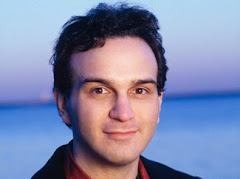Billed as "Heroic Strauss and Beethoven", the concert given by Hans Graf, Grzegorz Curyla and the MPO was quite well attended. I personally wanted to see the venerable Austrian conductor lead performances of pieces other than Mozart that he is justly famous for.
The concert opened with Richard Strauss' youthful one-movement Serenade for winds in E flat major, which was probably influenced by Mozart's Serenade K 361. This piece was aptly chosen as Graf's gentle manner of conducting brought out the chamber nature of this youthful opus. It flowed beautifully here, helped by some intricate and accurate playing by the MPO wind players.
Next up, the MPO's principal hornist Grzegorz Curyla strode up to give us the premiere performance of Richard Strauss' Second Horn Concerto in E flat major at the Dewan Filharmonik Petronas. The Second Horn Concerto is a much subtler work than his youthful and ebullient First Horn Concerto, which suited Curyla's conservative style of horn playing.
Over the course of the three movements, Curyla's assured playing and muted tone seemed to blend homogeneously with the orchestra, rather than standing out as a soloist. His intonation was generally secure and with very few cracked notes. What was missing was a rich open tone and round sound, reminiscent of super hornist, Radek Baborak (previously of the Berlin Philharmonic Orchestra) who played superbly here twice in Kuala Lumpur in the last few years.
Nevertheless, the less sophisticated audience who applauded between movements of the horn concerto gave Curyla a good ovation and he rewarded them with a solo encore in the shape of Olivier Messiaen's 'Appel Interstellaire' from Des canyons aux étoiles... Curyla made all sorts of unusual sounds from the French horn, which was hugely enjoyable. The techniques that Curyla had to employ were flutter-tonguing, closed notes, glissandos, and faintly-sounded oscillations produced with the keys half-closed. This was indeed masterly horn playing here.
In the second half, maestro Graf led a very good performance of Beethoven's Eroica Symphony. Using a large MPO string section, the notes and the sense of ensemble were in place. However, Graf's reading proved to be beautiful and slightly less bellicose than revelatory. The expansive first movement was stately, but I would have preferred an edgier, less cautious reading, particularly leading up to the strikingly dissonant chords and syncopation in the development.
In the solemn second movement Marcia funèbre, Graf’s reading at a faster than usual tempo lacked the intrinsic tension and mournfulness that underlies the score. The Allegro vivace Scherzo third movement enlivened the mood and there was some good brass playing, especially in the section for three horns.
The emotional range of the thematic variations of the fourth movement was explored well and some particularly fine flute playing underlaid a sensitive and mature reading of the finale. A standout moment was the very "gypsy manner" in which the violins performed the G minor episode. This was a Beethoven interpretation of rounded, rather than muscled, heroism from Graf.
Subscribe to:
Post Comments (Atom)

















































No comments:
Post a Comment